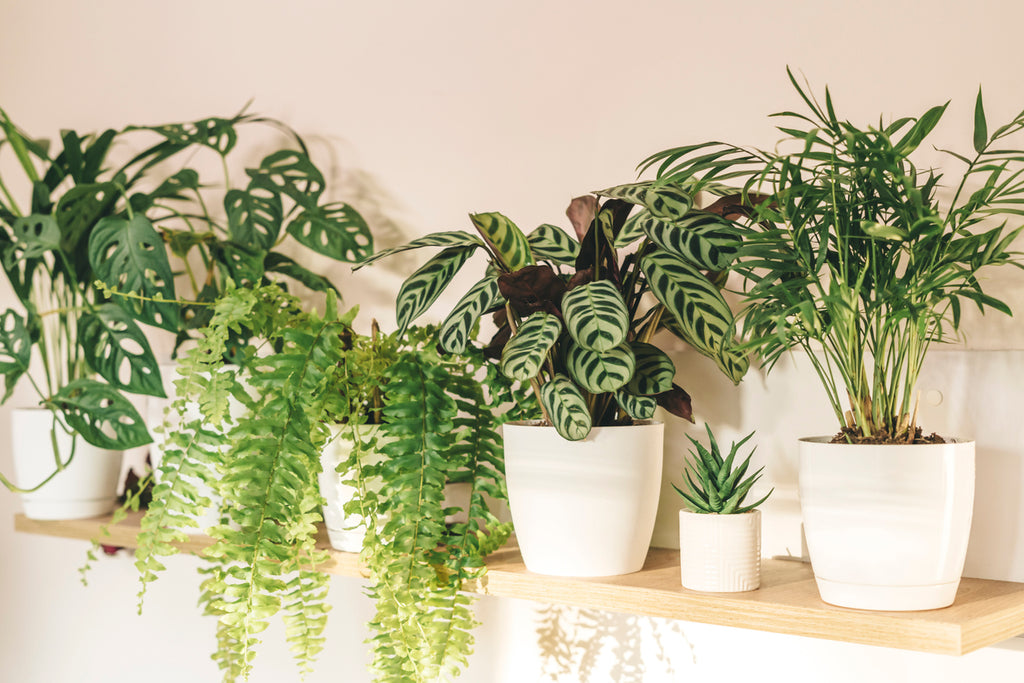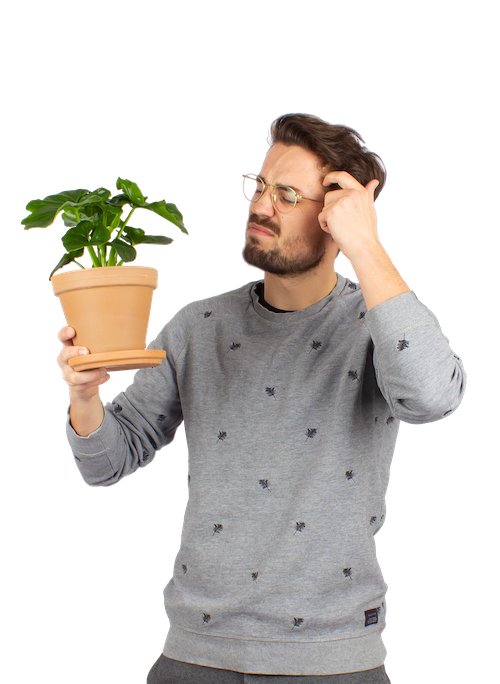Who could ever stop at one?! We’ve all been there—you collect plant after plant, and suddenly your home is looking like a jungle.
Firstly, congratulations. Secondly, if you’re at a loss of how to place each new family member (or if you even should), this article is for you!
Grouping houseplants has multiple advantages beyond just aesthetics. While the allure of individual potted plants is undeniable, there's a growing trend that takes plant care to the next level. Here, we will explore the benefits of creating lush, green clusters within your living spaces and how it can transform your home into a thriving oasis.

Enhanced Humidity Control
Houseplants release moisture through a process called transpiration, wherein water evaporates from their leaves. When grouped together, plants collectively increase the humidity in their immediate surroundings. This is especially beneficial in dry indoor environments, helping to combat the effects of air conditioning or heating systems that can lead to dry skin, irritated eyes, and respiratory issues.

Microclimate Creation
Different plants thrive in different conditions. By grouping houseplants with similar light, humidity, and temperature requirements, you can create microclimates within your home. This allows you to cater to the specific needs of each plant, promoting their optimal growth and overall well-being. It also simplifies care routines, making it easier to provide the right conditions for each group.
For example, pairing together humidity-loving plants such as ferns, calatheas, and peace lilies will ensure they're getting an adequate amount of filtered light and moisture!
Stress Reduction and Mental Well-being
Studies have shown that the presence of indoor plants has a positive impact on mental health. Grouping houseplants takes this effect to another level. The collective greenery creates a soothing and harmonious atmosphere, reducing stress and promoting a sense of well-being. Tending to a clustered group of plants can also be a meditative and rewarding activity, further contributing to a positive mental state.

Aesthetic Appeal
Beyond the functional benefits, grouping houseplants enhances the visual appeal of your living spaces. Experiment with varying heights, textures, and colors to craft visually captivating plant arrangements that serve as natural focal points in your decor!
Contrasting Textures:
Combine plants with different leaf textures to add visual interest. Pair smooth, shiny leaves with those that have a more textured or fuzzy surface.
The Lipstick Plant and Goldfish Plant are two that would go swimmingly together.

Varied Heights and Sizes:
Mix plants of various heights and sizes to create a visually appealing arrangement. Taller plants can serve as a focal point, while smaller ones add layers and fill in the space. This variation adds depth and dimension to your display.
Color Harmony:
Consider the color palette of your plants. Choose complementary colors or shades within the same color family. This creates a cohesive and pleasing look. Alternatively, experiment with contrasting colors for a bold and eye-catching arrangement.
If you're feeling bold, go for a combo like the Red Prayer Plant and Red Anthurium!

Thrillers, Fillers, and Spillers:
Apply the concept of thrillers, fillers, and spillers commonly used in gardening to your indoor plant arrangements. Thrillers are the focal point plants, fillers add volume and fill gaps, and spillers cascade over the edges of containers. This approach brings balance and interest to your display.
Our best selling trio of Jack the Rubber Tree, Luke the ZZ Plant, and Miley the Satin Pothos just so happen to fit the bill.

There you have it! Fool-proof ways to group plants together to look good and feel good.
Do you have some mini jungles you're proud to show off? Tag us on Instagram @plantsome_ca or email us at hello@plantsome.ca!












